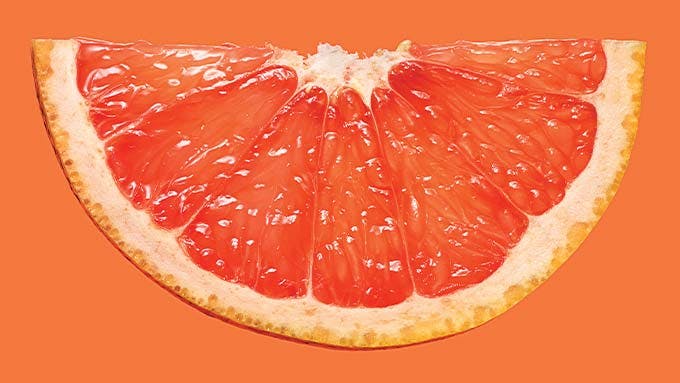lg325
Diamond Member
Florida orange producers record worst year since 1930s Some information for those who invest in agriculture commodity Futures.
Follow along with the video below to see how to install our site as a web app on your home screen.

Note: This feature currently requires accessing the site using the built-in Safari browser.


The one's I remember back in the day were huge and a lighter pink. My church sold them by the case as a fundraiser. I think I ate more than I sold. They were so popular that some members contracted on their own after the fund drive was over, filling repeat orders from fund drive customers. This was back in the late 70's or early 80's. I've never seen such fruit since.It sucks that the Valley here in Texas suffered the blight and it wiped out the grapefruit industry.
Ruby Red grapefruits were the best in the world!!
They still sell some called Ruby Reds but they're nothing like they were back in the day.
You could get two tall water glasses of juice off one grapefruit!!
And the taste was fantastic!!! Tart and sweet at the same time,Man do I ever miss em.


The one's I remember back in the day were huge and a lighter pink. My church sold them by the case as a fundraiser. I think I ate more than I sold. They were so popular that some members contracted on their own after the fund drive was over, filling repeat orders from fund drive customers. This was back in the late 70's or early 80's. I've never seen such fruit since.
And the taste was fantastic!!! Tart and sweet at the same time,Man do I ever miss em.

Florida orange producers record worst year since 1930s Some information for those who invest in agriculture commodity Futures.
True, I went to buy some at the grocery store and what was there was small and sad-looking fruit.Peaches from GA are out this year. 80% crop loss this year. A late cold snap froze the blossoms. There just aren't going to be a lot of Georgia peaches this year.
Back in the 1950's I worked for Kroger's after school. We sold canning peaches by the "lug", (thirty pound wooden crate). They were stacked on the sidewalk in front of the store by the hundreds. As they were nearly ripe you could smell them from a block away. Large, juicy, and delicious. Those were the days, in many more ways than one.Peaches from GA are out this year. 80% crop loss this year. A late cold snap froze the blossoms. There just aren't going to be a lot of Georgia peaches this year.
Also the worst wheat production in the US since 1917.
Get used to this because scarcity is going to become a thing. We can genetically modify crops to withstand higher global mean temps, but we cannot modify the soil to enable water and nutrient uptake once temps reach certain levels.
Fewer crops, more people = higher commodity prices.
Also the worst wheat production in the US since 1917.
Peaches from GA are out this year. 80% crop loss this year. A late cold snap froze the blossoms. There just aren't going to be a lot of Georgia peaches this year.
It is not the worst productoin since 1917, it is the worst planted to harvested ratio...huge difference.
U.S. wheat production for the 2023/24 marketing year is forecast at 1.66 billion bushels, up 1 percent from the previous year, but down 7 percent from the recent 5-year average of 1.788 billion bushels. USDA’s National Agricultural Statistics Service (NASS) provided its first survey-based production forecast for the 2023/24 U.S. winter wheat crop in the May 12 Crop Production report. Winter wheat production overall is projected up 2 percent to 1.130 billion bushels. Average yield is estimated at 44.7 bushels per acre, down 2.3 bushels from last year. Winter wheat area harvested is projected at 25.3 million acres, up 8 percent from last year. The harvested-to-planted ratio for winter wheat overall at 67 percent is the lowest since 1917.
Japan gonna be bummin' fer cow feed.Florida orange producers record worst year since 1930s Some information for those who invest in agriculture commodity Futures.